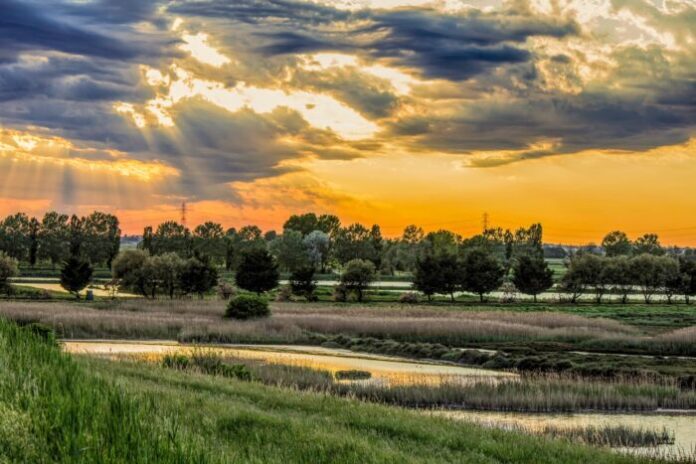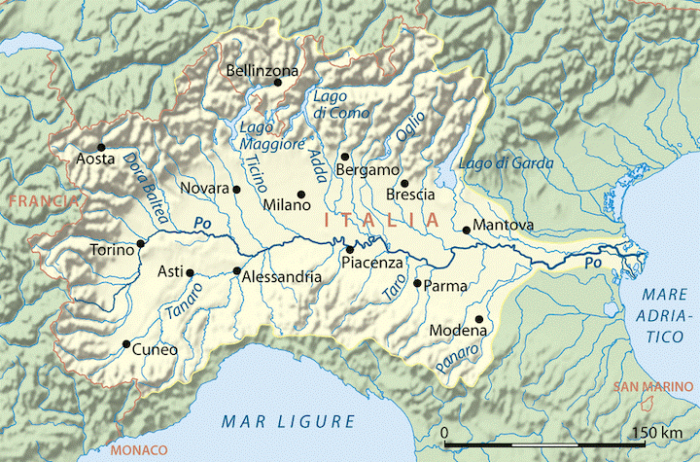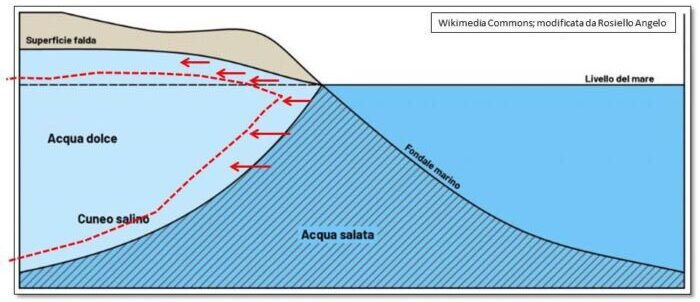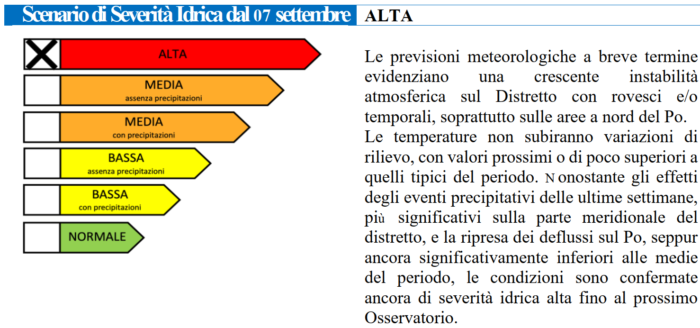
When we speak of climate change, we often think of the increasingly intense and violent events that frequently hit the Mediterranean regions, such as tornadoes, water bombs, etc.; these types of phenomena, which are very dangerous for buildings and people, are, however, limited in their effects both in time and space, in the sense that they affect relatively small portions of the territory and short intervals of time. But one of the effects of the ongoing climate change is represented by the drought that, during the last year, has affected our entire peninsula with greater incidence in northern Italy, where the entire Po river hydrographic district is still in a water crisis with few historical precedents. To better understand the impact of this type of event, it is necessary to know the main characteristics of the Po river basin and, therefore, of the vast portion of territory affected.
The Po is the country’s longest and most important river, with a length of 652 km and an average volume of water discharged into the Adriatic Sea of 1540 m3/s (average flow at the mouth); it flows through most of northern Italy in an average West-East direction, starting from its sources at Monviso (Cottian Alps in Piedmont) to its wide delta mouth in Emilia Romagna. The catchment area covers (from west to east) the Italian slopes of most of the Alps as well as the northern slopes of the Ligurian and Tuscan-Emilian Apennines. That is, all precipitation (rainfall, snow and glacier melt) that falls in these areas goes to feed the Po river system, through water inflows that flow into the river’s main stem as it travels along the Po Valley. A river basin is thus made up of hierarchical watercourses, such as streams and rivers and/or lakes, which, in the case of northern Italy, represent fundamental water resources for the more than 17 million inhabitants present; The main tributaries of the Po are considered among the most important rivers in the country, such as (from West to East) the Dora Baltea, the Ticino, the Adda and the Oglio (tributaries on the hydrographic left and fed by the southern Alpine slopes) and the Tanaro, Taro and Panaro rivers (tributaries on the hydrographic right and fed by the northern Apennine slopes).

Among the freshwater reserves exploited for civil, agricultural and hydroelectric purposes are the large Alpine lakes (Garda, Maggiore, Iseo, Como, …) located in the northern sector of the Po river basin, which are of fundamental importance both for the continuous inflow of water to the main river, and on a more local scale for the numerous communities located on the banks of these lakes. Climate change acts on such a system, causing a continuous but unstoppable rainfall deficit over the entire catchment area, which in the medium to long term leads to drastic reductions in the flow rate of every watercourse flowing into the Po. The decrease in rainfall, both in terms of quantity and in terms of time periods (it is raining more and more violently in shorter and shorter periods), the lack of considerable snow accumulations on the Alpine peaks and the continuous withdrawal of water resources for agricultural and industrial use cause a scarce recharge of the system, which affects the whole basin extension and for longer and longer periods. It is for these reasons that this year’s drought in this area has led to a severe water crisis with serious repercussions on all activities in the Po Valley.
A further problem, which concerns the areas near the mouth of the Po and coastal and sub-coastal areas in general, is the saline wedge, i.e. the intrusion of sea water inland due to significant decreases in a river’s flow rate. In general, two types of water, fresh and salty, coexist in the mouth areas: but if the former decreases, this favours the inward pull of sea water, which intrudes from the mouth inland. The effects of such a process are the disappearance of groundwater (fresh water) replaced by brackish water unusable for agricultural purposes and the drying up of coastal areas, as well as problems for aqueducts in supplying drinking water; to these we must add the various environmental problems due to the massive presence of salt water in ecosystems such as river deltas, causing serious damage to both flora and fauna.

Such an extensive and complex hydrographic system is currently managed by a public body such as the Po River District Basin Authority, which supervises and monitors it on behalf of the Ministry of Ecological Transition, coordinating the various local authorities involved in the safeguard and development activities of the Po river basin. In the management of water emergencies, reference must be made to the Permanent Observatory, which collectively manages all the monitoring data from the entire hydrographic system and, on the basis of these, adopts the most suitable measures to mitigate the effects of disasters in general.
From the data processed and published to date, a very severe water crisis emerges over the entire catchment area, recording flow rate values for the main Alpine tributaries and for the Po well below the historical minimums over the same period (May-June-July), to which practically nil contributions from the rivers of Apennine origin must be added. The water severity scenarios for the entire section were also corroborated by the lack of effective rainfall for a long period and the rapid melting of snow accumulations at high altitudes, factors due to high temperatures well above seasonal averages (in some stations, values higher than 6°/8° C were recorded). The positive thermal anomaly and the negative rainfall anomaly over the entire catchment area persisted throughout the June-July 2022 period, with brief episodes of thunderstorm showers of little effect. At the same time, the critical reduction in river flow rates in the mouth area led to an important intrusion of the saline wedge, which, from the Adriatic inland, reached a peak advancement of up to 40 km, causing serious inconveniences in the water supply of cities such as Ferrara, Ravenna and Rovigo, considerably reducing withdrawals for irrigation and industrial use. The severe drought situation was also recorded on the Alpine lakes, all of which were characterised by minimal accumulation and constantly decreasing water levels throughout the district, despite the sporadic rainfall recorded.
The minimal resumption of outflows was favoured by more unstable weather conditions during the month of August, where more conspicuous and frequent rainfall, together with average temperature values within the seasonal norm, allowed for a better supply of water to the river courses, which in any case remain with flow values below typical seasonal values. In spite of this, the increase in river discharge has led to a considerable retreat of the saline wedge towards the mouth, which currently stands at 20 km from the coast anyway (September 2022) and, in addition, an increase in water levels has been recorded in the large Alpine lakes, at any rate with accumulation volumes close to the regulation minimums. The picture that emerges at the end of the summer is once again characterised by high water severity, despite the increase in the last period of widespread rainfall over the whole of northern Italy, which has merely allowed for the recovery of historical minimum conditions, which in fact testify to other drought events in the past. Therefore, the entire hydrographic district remains in a condition of serious water crisis affecting a vast portion of the national territory, causing serious inconvenience to the millions of inhabitants living in these areas.

Bulletin no. 15/2022 of 07/09/2022 (https://adbpo.it/osservatorio-permanente/)
For this reason, it is necessary to understand that the effects of climate change include not only the destructive events continually recounted by the media, sometimes even in a spectacular fashion, but also natural disasters that act on a regional scale and in the medium to long term, drastically changing the habits and activities of a large number of people. The only possible response is based on a dual approach: adaptation to new and changing environmental conditions, rational management of resources, minimising waste.



































